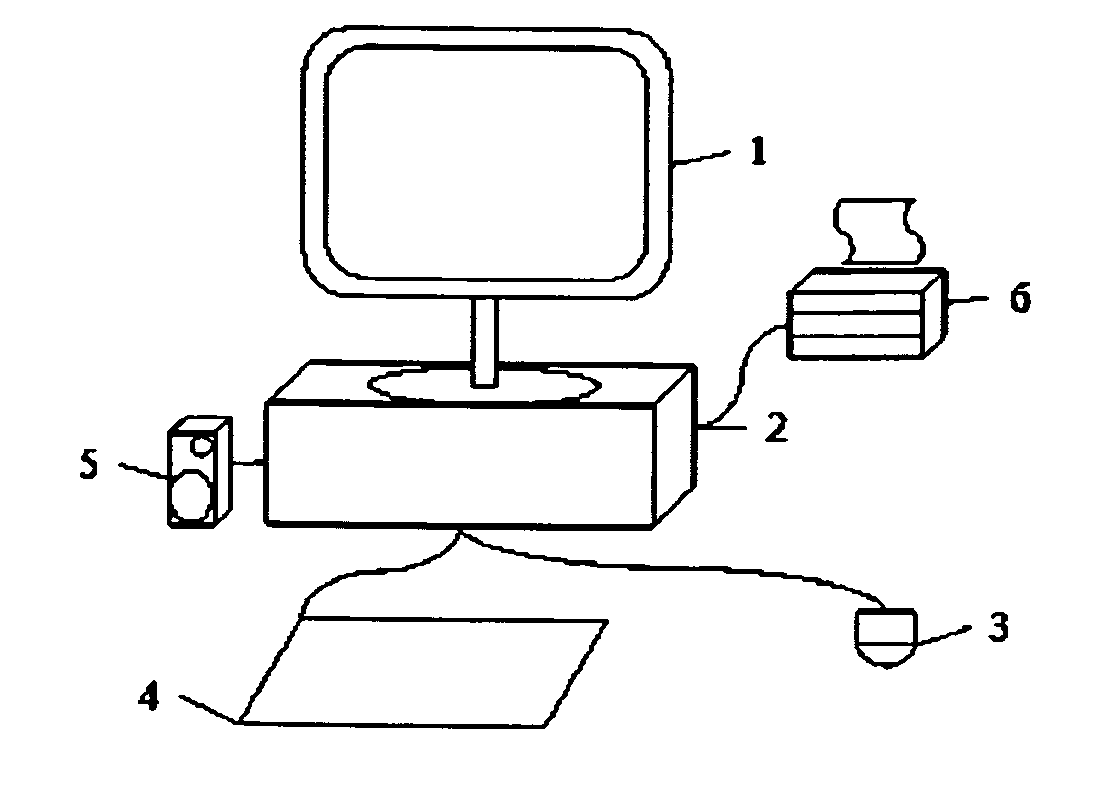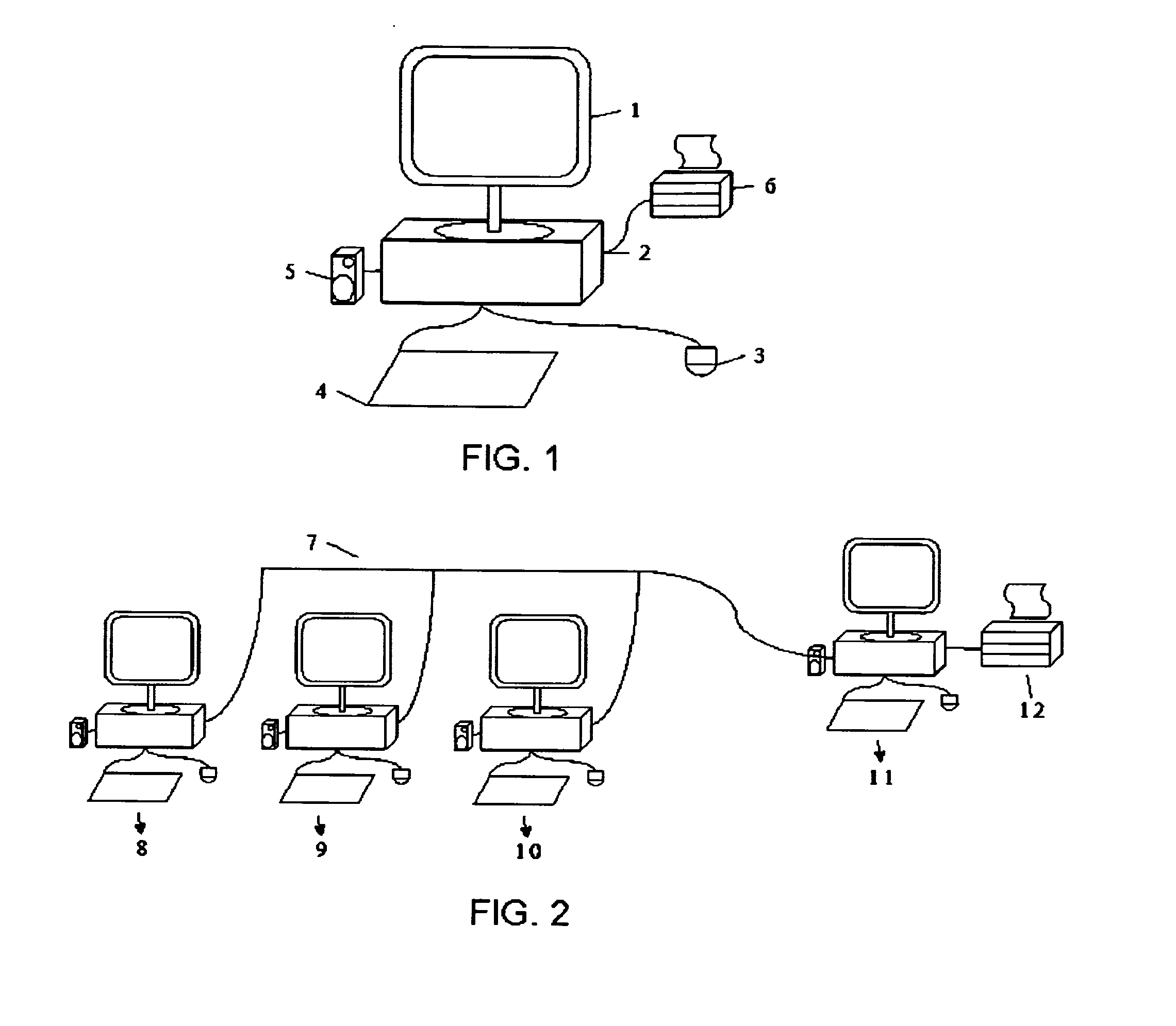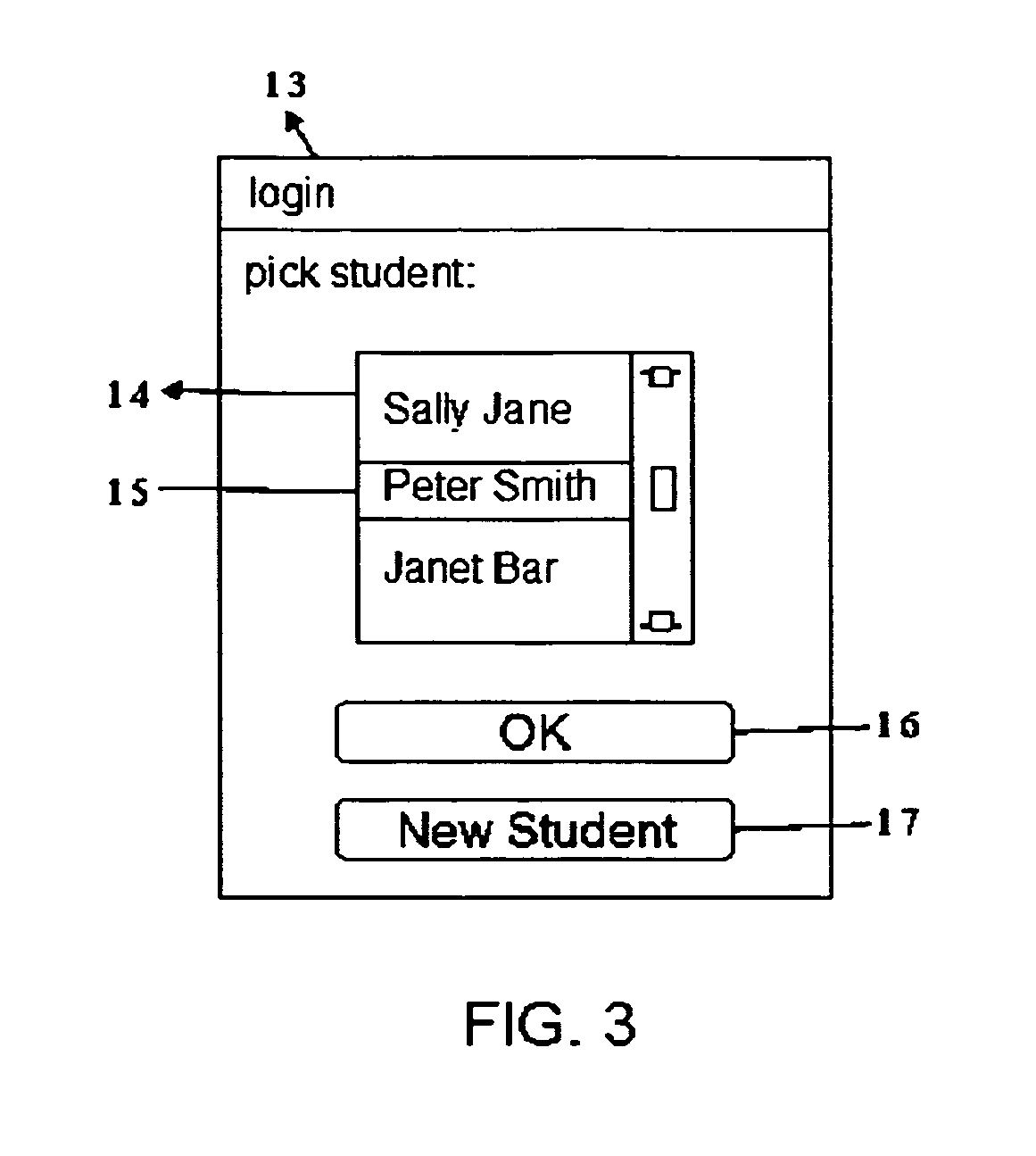Method for teaching reading using systematic and adaptive word recognition training and system for realizing this method.
a teaching method and adaptive technology, applied in the field of teaching reading using, can solve the problems of difficult and laborious reading task, difficult to change reading habits in adult readers, etc., and achieve excellent reading style, and improve reading skills in adult readers.
- Summary
- Abstract
- Description
- Claims
- Application Information
AI Technical Summary
Benefits of technology
Problems solved by technology
Method used
Image
Examples
Embodiment Construction
[0057]FIG. 1 shows a computer and peripheral configuration of the preferred embodiment. It comprises a computer box 2 that includes a central processing unit, random access memory, hard disk storage, and peripheral connectors. Connected to the computer box is keyboard 4, mouse 3, display screen 1, speakers 5, and a printer 6.
[0058]FIG. 2 shows the network computer and peripheral configuration of the alternative embodiment. It comprises of three client computers 8, 9, and 10 and a server computer 11. These four computers are connected together in a local network via ethernet wires 7. The server computer 11 maintains the student progress information associated with this invention in a database which is stored on its hard drive. Any children can continue a new training session by any of the using client computers 8,9 or 10 as the information associated with their progress is stored centrally on said server 11. The server 11 is connected to a printer 12 and any reports associated with ...
PUM
 Login to View More
Login to View More Abstract
Description
Claims
Application Information
 Login to View More
Login to View More - R&D
- Intellectual Property
- Life Sciences
- Materials
- Tech Scout
- Unparalleled Data Quality
- Higher Quality Content
- 60% Fewer Hallucinations
Browse by: Latest US Patents, China's latest patents, Technical Efficacy Thesaurus, Application Domain, Technology Topic, Popular Technical Reports.
© 2025 PatSnap. All rights reserved.Legal|Privacy policy|Modern Slavery Act Transparency Statement|Sitemap|About US| Contact US: help@patsnap.com



